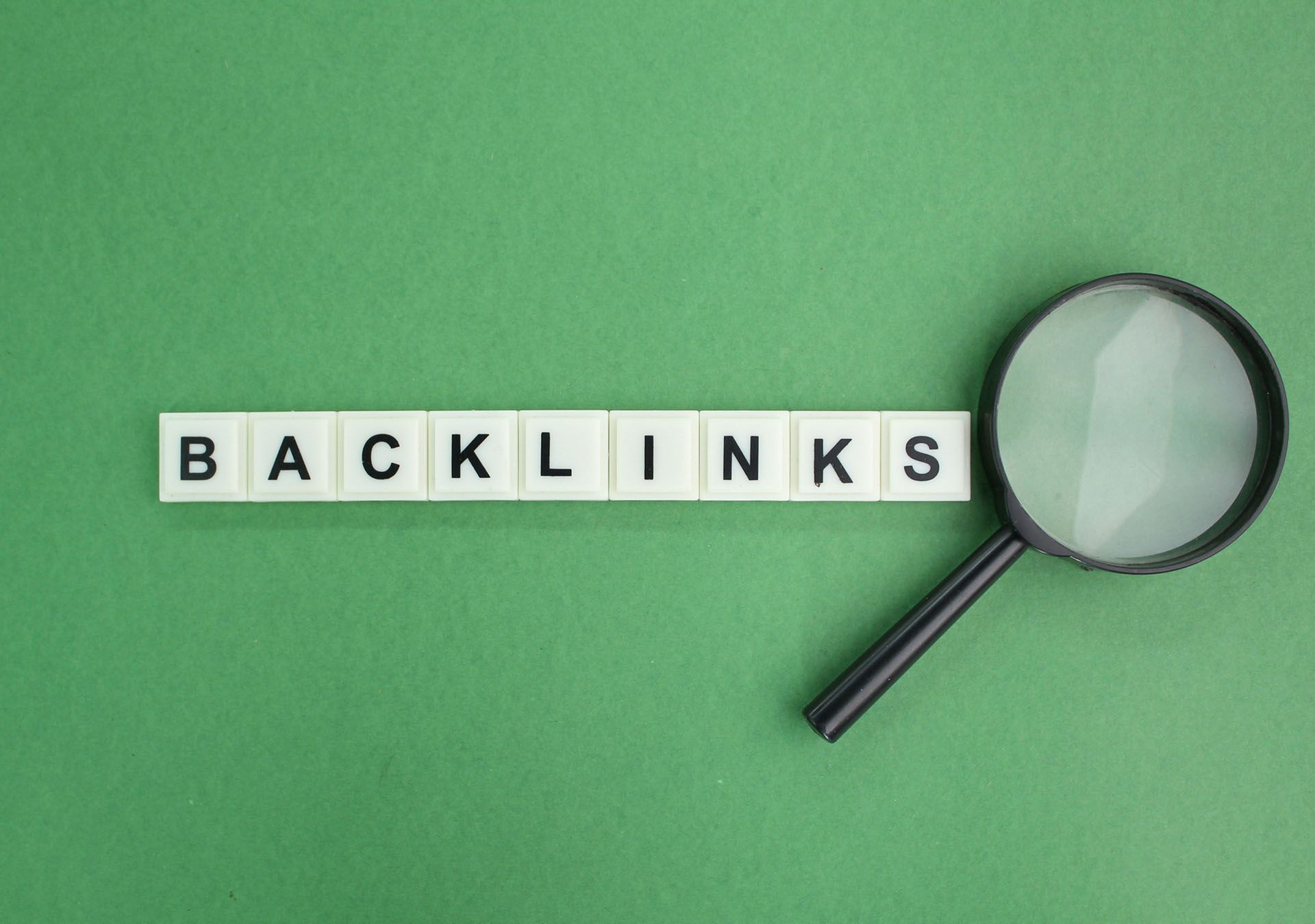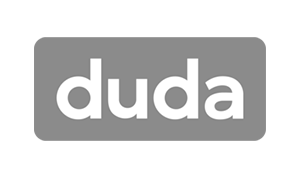Crown Street, Wollongong, 2500
Ecommerce Website Design: Best Practices for Conversion
Do you have an ecommerce website or are you planning to launch one? If so, having a well-designed and user-friendly ecommerce platform can play a crucial role in the success of your online business.
In today's competitive market, it is essential to provide customers with a seamless and enjoyable shopping experience in order to increase conversion rates. The best web design experts are aware of the importance of ecommerce website design and how it can impact a business. So in this blog, we have identified certain best practices that can help you design an effective ecommerce website that not only attracts customers but also encourages them to convert.
What is an ecommerce website design?
Ecommerce website design refers to the process of creating a website that is particularly designed to sell products online. It typically involves designing product pages, shopping carts, and checkout processes to create a seamless buying experience for customers. The primary objective of ecommerce web design is to offer customers a delightful online shopping experience while optimising conversion rates and boosting sales.
Why is ecommerce web design important?
While website design is not only the primary reason why your customers are visiting your ecommerce store, it greatly contributes to an enhanced user experience when seamlessly integrated with social media marketing, digital campaigns, and search engine optimization (SEO). Here are a few reasons why ecommerce website design is important for your online business:

User Experience
User experience (UX) is a critical aspect of ecommerce website design, as it directly impacts customer satisfaction and conversion rates.
Understanding the needs and preferences of your target audience is fundamental in crafting an exceptional user experience. Conduct market research to gather insights about your target audience’s demographics, interests, and purchasing behaviors.
More importantly, make it easy for them to find the products they need. If your customers are able to quickly find the products they need within a few clicks, chances are customers will remain loyal and purchase from you again.
Credibility
A good ecommerce site also has a great impact in determining 75% of your store's credibility, which is why you need to make it a point to leave a good impression from the moment your customers land on your site.
Your site's design should reflect trustworthiness, a clean layout, and an overall easy-to-navigate experience. In addition, make sure your customers can easily find and read reviews from previous customers so they can feel confident in their purchase decisions.
Competitors
Almost every online business today uses web design to gain a competitive edge. So if you are not using it yet, it means that you're already behind. Your competitors are likely investing in their ecommerce platform to attract more customers and keep them coming back. With this idea, you need to be doing the same if you want to stay ahead in the game.
Analyse your competition to see what features they are offering. Try to get an idea on which designs and colors they are using, and how their page layouts compare with yours. This way, you will know which area to improve on for your own ecommerce website.
Ecommerce Website Design vs. Ecommerce Website Development
While ecommerce website development and ecommerce web design are closely related, they actually differ in some aspects of creating an online store.
Ecommerce website development focuses on the technical implementation and operational aspects of the online store. It involves activities like coding, programming, database integration, payment gateway setup, and ensuring smooth a seamless user experience and functionality.
On the other hand, ecommerce website design pertains to the visual appearance and user experience of the online store. It involves creating a visually appealing layout, selecting appropriate colors, typography, and images, designing an intuitive navigation, and optimising the user interface for easy interaction.
Both development and design are crucial for a successful ecommerce website but they involve different skill sets and considerations. A well-designed ecommerce site with a user-friendly interface can enhance the customer experience and drive conversions, while effective development ensures that the website functions smoothly and securely.
How do you design an ecommerce website?
As much as possible, your site should be appealing enough for them to stay longer and explore all your offers. Ultimately, they should be able to find what they are looking for easily and quickly. To do this, you need to create an intuitive navigation system that makes it easier for them to go from one page to another. Moreover, your ecommerce site should have a well-defined product categorisation, user-friendly interface, compelling product descriptions, eye-catching product images, customer reviews, easy checkout process, and a secure payment processing.
How should an ecommerce website be structured?
When structuring an ecommerce website, it is important to create a user-friendly and intuitive layout that enhances every user's shopping experience. Here are some key elements to consider:

Homepage
The homepage consists of a clear overview of your brand, highlighting your featured products or promotions, and include easy navigation to different product categories.
Navigation Menu
Integrate an organised and user-friendly navigation menu that empowers users to explore various product categories, locate specific items, and effortlessly access essential pages like the shopping cart and customer account.
Product categories
Organise your products into logical categories and subcategories for a quick user navigation. Use descriptive labels and consider incorporating filters or sorting choices for better search results.
Product pages
Each product page should contain a detailed information of the product, including clear product descriptions, pricing, availability, high-quality images and customer reviews if applicable.
Shopping cart
Make sure that your shopping cart is readily accessible and prominently displayed across the website. It should display the selected items, quantity, and total cost. You should also offer convenient options for updating quantities, removing items, and proceeding to checkout.
Checkout process
Streamline the checkout process to minimise customer friction. Only include the necessary steps, present guest checkout choices, and ensure that you provide secure payment gateways. Also add progress indicators to assist users in navigating the process smoothly.
Search functionality
Implement a strong search feature that allows users to search for products by keywords, filters, or attributes. Add auto-suggestions and ensure accurate search results are displayed.
Responsive design
Optimise your website for mobile devices. Prioritise a responsive design that offers seamless navigation and quick-loading pages for an enhanced user experience.
Trust signals
Establish trust with your customers by displaying trust badges, security seals, customer reviews, ratings, and social proof. You may also include a clear return policy, shipping information, and contact details to ensure shoppers feel secure in their purchases.
Call to action buttons
Include clear call-to-action buttons so customers can add items to the cart easily. Use persuasive call-to-action buttons like "Add to Cart," "Buy Now," "Sign Up," and "Learn More" to encourage customers to take the desired action.
What are the best practices to follow when creating a great ecommerce website design?
Every ecommerce store should be tailored to meet their customers' specific demands and requirements. With these elements in mind, they can work together to create a solid foundation for any eCommerce business, ensuring that customers have a pleasant and user-friendly experience while shopping online. Here are some of the best practices that are fundamental to every ecommerce website design:
1. Simple and Clear Navigation
The more distractions you put on your ecommerce website such as banner ads, pop-ups, or video advertisements, the more likely your customers will leave without making a purchase. That's why it’s always best for ecommerce website design to keep navigation simple and straightforward by only adding concise content, clear descriptions, and visible menus. As much as possible, remove non-essential elements that could distract them from buying.
When your website is well-structured and easy to navigate, customers can find the items they desire hassle-free. This smooth user experience not only boosts sales but also enhances customer satisfaction.
2. Branding and Consistency
Establishing a strong brand identity plays a crucial role in cultivating trust and recognition among your customers. Not only does it foster a sense of familiarity and loyalty, but it also helps differentiate your eCommerce store from competitors.
To create a successful brand, ensure that your visual elements and messaging are consistent across all channels, including website design, product photography, packaging materials, and customer service. Pay attention to essential details like font style and colour palette to maintain a unified look.
By developing a clear and consistent brand identity into your ecommerce website design, you can create a memorable shopping experience that encourages customers to return and recommend your online store to others.
3. Up-to-date with Trends
Decades ago, ecommerce stores primarily served as intermediaries connecting customers with sales teams. But in today's landscape, ecommerce websites are constantly evolving alongside technological advancements. Evolving trends involve interactive designs, dynamic pages, and data-driven product recommendations.

More and more customers are now expecting a personalised digital user experience. They seek a seamless journey that empowers them to search for products, make purchases, and track orders online. Moreover, social commerce is rapidly expanding and has become a critical element in marketing ecommerce stores while establishing connections with shoppers across diverse channels.
4. Responsive Design
Customers often shift between various devices when shopping online. That's why it’s important that your ecommerce website design is optimised for any resolution with responsive technology. This includes making sure the images, text, and buttons are easily readable on both desktop and mobile browsers.
Since more than 50% of internet traffic comes from mobile devices and 37% of consumers are inclined to make purchases from mobile-responsive websites, optimising your website for mobile users is crucial. By adopting responsive design for your ecommerce site, you guarantee that users can access and engage with your website seamlessly, regardless of the device they use. This, in turn, enables you to enhance your conversion rates and drive more sales.
To ensure your website is optimised for mobile, test your mobile design before launch to confirm screen size adjustments and feature migration.
5. High-Quality Product Images
Product images are vital for any ecommerce store, as they give customers a better idea of the product. Images that are clear, well-lit, and rich in detail empower customers to form an accurate understanding of the product, enabling them to make informed choices when making a purchase. Studies have shown that high-quality product photos can elevate a website's conversion rate by as much as 40%, making it a critical aspect of eCommerce website design.
When selecting images, be sure to choose high-quality photos that accurately represent the colour and texture of your products and use appropriate file sizes so that images can load quickly. Additionally, using multiple angles and zoom functions can also allow customers to get an even better understanding of what your products look up close.
6. Social Proof and Testimonials
Adding social proof and client reviews in your ecommerce site can help establish trust and credibility among potential customers. This is especially important for customers who might be unfamiliar with your brand, as it helps to showcase the positive experiences that other customers have had with your products.
Adding trust signals to your ecommerce store not only provides a sense of transparency and assurance, but it can also help build trust with your potential buyers. Some social proofs to include are:
High-quality images
High-quality images basically enable customers to virtually taste, smell, hear, feel, and experience your product even before they actually purchase it. To emphasise such product details, strategically position photos against a white backdrop. Additionally, consider incorporating lifestyle photos to demonstrate how practical and usable your product is.
Contact Information
Your contact details are just as important as the pictures of your products. By adding your contact details in your ecommerce site, customers can easily get in touch with you if they have any questions or concerns. It also builds trust and creates a sense of transparency, as potential customers are able to see that you are an established business and can be contacted for any further information.
Store Policies
Store policies basically inform customers of how your store operates, including how it handles returns and refunds, payments, deliveries, etc. Having clear policies in place helps to create trust with customers since they know exactly what to expect when they make a purchase from you. What's more, having a return policy on your ecommerce platform also decreases the shopping cart abandonment as it guarantees customers that their purchases will be taken care of should anything go wrong.
Technical Certifications
Technical certifications not only display your commitment to professionalism and continuous learning but they also validate your compliance to industry standards. These merits can enhance your professional credibility and reputation not only within your existing network but also when engaging with current clients or seeking new potential clients.
By including positive reviews, customer stories, and user-generated content, potential customers can make an informed decision about your offerings. This will help them decide if they’re willing to take a chance on your products or services, which can then lead to increased sales and customer loyalty.
You can also use product pages, blogs, and social media platforms to display customer reviews. This will help convey a message of trustworthiness and credibility, enabling potential customers to choose your brand over competitors.
7. Secure Payment Systems
Aside from clear navigation, you should also ensure that your ecommerce website offers secure payment systems. Here are some things to consider:
- Your payment processing should offer multiple payment gateways such as credit cards, PayPal, as well as other popular payment options like Apple Pay that can instill trust in your brand and encourage customers to complete their purchase.
- You should also ensure that your website is secure by implementing an SSL certificate which encrypts all data exchanged between the customer’s web browser and your server. Additionally, consider investing in a PCI compliant system to further protect online transactions.
- To enhance the user-friendliness and reliability of your payment systems, it is essential to conduct regular testing and optimisation.
By implementing these strategies, you can increase the conversion rate of your eCommerce website and deliver a seamless shopping experience that leaves a positive impression on your customers.
8. Seamless Checkout Process
A smooth checkout process plays a vital role in lowering cart abandonment rates and ensuring a gratifying shopping experience for your customers. By simplifying the purchase process, you can increase the chances of converting casual browsers into loyal buyers and even encourage repeat purchases.
Essential components of a streamlined checkout process include secure payment gateways, clear and concise forms, and an aesthetically pleasing design that establishes trust and confidence in your brand. Aside from these aspects, it’s also important to consider other factors that can contribute to a seamless checkout process, such as mobile optimisation, progress indicators, and multiple payment options.
By taking these factors into consideration and implementing best practices, you can create a smooth checkout experience that encourages customers to complete their purchase and return to your online store in the future.
What are the Common e-commerce Website Design Mistakes to Avoid?
Common eCommerce website design mistakes to avoid include:
Bad User Experience
The reason why visitors visit your online store is most likely because of the products you offer. However, while this is the primary draw, it’s also important to consider the user experience of your website. User experience directly impacts customer satisfaction and conversion rates. If customers find that navigating your site is difficult or your site loads very slow or perhaps there is no clear call-to-action, they will most likely leave your website without making a purchase.

Poorly designed ecommerce websites can lead to a frustrating user experience, which can turn away potential customers. As a business owner, this is the least thing you want. To ensure that your customers have a pleasant shopping experience, make sure that your website is optimised for both desktop and mobile devices, has intituive navigation menus, and features a clear call-to-action on every page.
Weak Value Proposition
Value proposition is basically what sets your ecommerce business among your competitors. It plays a crucial role in persuading your potential customers to return to your store.
In line with this, highlighting your ecommerce business's value proposition extends beyond the content you present. The choice of colors and imagery in your web design can also have a significant impact. Therefore, when you create an ecommerce website, it's advisable to select a color pattern and incorporate images that align with and reinforce your value proposition.
Lack of Visual Hierarchy
Visual hierarchy simplifies the navigation process for your visitors as they navigate through your ecommerce store. Without it, they may end up lost and confused on the different pages, which can lead to them abandoning their shopping carts.
With this, it is important that you make use of white space, bold text for headlines, and different colors to add emphasis on certain elements in the ecommerce store. This will ensure that your visitors can easily identify which sections they should focus on when browsing through your site.
The crucial factor here is maintaining consistency. Ensure uniformity in your choice of color schemes for the background colors, as well as text colors. Similarly, you should keep your font sizes consistent to preserve the integrity of your web design layout.
Missing Call-To-Action
While you designed your ecommerce store with the intention to make it look professional, it is also important that you consider how your visitors will take the desired action. A call-to-action button should be implemented on each page so that customers know what actions are available to them to complete their purchase.
To ensure they can easily access your call-to-action buttons, consider placing them at the top of each page, as well as in the side bars. You can also use contrasting colors to draw attention and make them stand out from other elements on the page.
Ineffective Product Pages
Ineffective product pages basically refer to pages that have failed to provide a comprehensive overview of the product, including its features, advantages, and disadvantages, and more.
When these pages lack important details, customers may not be able to make an informed decision about the product, which can then lead them to leave your site without making a purchase. To prevent this, all you need is to make sure you include relevant information from product reviews to customer feedbacks.
Low-quality Product Images
Product images are one of the most important elements on an ecommerce store as they primarily affect how customers perceive the quality of your products. Low-quality product photos will make customers doubt the quality of your products and can, therefore, prevent them from making a purchase.
To ensure this isn’t an issue on your website, consider hiring a professional photographer to take high-quality photos of your products. This way you can ensure that your photos are not blurry.
Lack of Advanced Search Options
While most website visitors have figured out what they want, some don't actually know what they are looking for. Sometimes, when customers visit ecommerce websites, they often have specific options in mind.
Advanced search options can be highly advantageous in such situations. These features enable customers to quickly find the exact products they are looking for by using filters and auto-suggestions. By providing a seamless and efficient search experience, advanced search options enhance customer satisfaction and increase the likelihood of conversions. These search features enable customers to search for products using a range of criteria, including factors like price range, size, color, and others.
Complicated Checkout Process
Complicated checkout process is one of the main reasons why customers abandon their shopping carts. While your products are great, it could be a hassle for customers to go through each step during checkout.
To make the checkout process easier and smoother, you should consider simplifying the form fields and offer multiple payment options. Additionally, providing progress bars gives customers an idea of how much time it would take to finish the checkout process.
Missing Trust Signals
From the term itself, trust signals are what helps establish trust among customers. Various elements such as signs, logos, and brands are aspects that increase the credibility of your business and make customers feel comfortable purchasing products from you. Moreover, it also helps build a good relationship with customers in the long run.

Cluttered Layouts
A cluttered layout can make your website difficult to navigate and overwhelming for shoppers, leading them to abandon their carts right away. To avoid this, you want to keep the design of your website simple and focus on creating a clear user navigation path. You may even include visual cues like arrows or icons to guide customers as they browse through products and help them find what they are looking for quickly.
Slow Loading Times
Slow loading times can frustrate users and lead to increased bounce rates. If your ecommerce website is taking too long to load, it can negatively impact your conversion rate, ranking, and traffic. In fact, for every second that your site takes to load, you lose an average of 17% in conversions. With this, it's important to optimise your ecommerce website and make sure that it loads quickly.
Poor Mobile Optimisation
Poor mobile optimisation may lead to a poor user experience on smaller screens, possibly causing customers to leave your online store.
To prevent these drawbacks, you need to establish an aesthetically pleasing and user-friendly online store that entices and retains customers.
By addressing these issues and prioritising on developing an intuitive, quick-loading, and mobile-responsive website, you can guarantee a favorable user experience and ultimately enhance the success of your ecommerce business.
Is conversion equivalent to a sale?
The concept of conversion goes beyond a simple sale as it involves a user taking a specific action that transforms their role or behavior. While conversion does not always mean a sale, it corresponds to a desired outcome of your marketing message.
For instance, a user that visits your website is only considered a reader. But once they submit a form and they subscribe, providing their personal details in exchange of exclusive content, this is considered a conversion. As they become a lead, their role and value change as well.
Another example is when a user visits a page, and after being convinced by your brand's message, they decide to purchase the product or service you offer. This would be considered a conversion, as the user converted from being an observer into a customer.
In other words, conversion means turning a user from one state to another: from a reader to subscriber; from an observer to an advocate; and even from visitor to buyer. It is important to distinguish between sales and conversions because each has different objectives.
Metrics such as reach, bounce rate, and time spent on your ecommerce website offer valuable insights into your current status. However, it's crucial to remember that all these metrics should ultimately contribute to one central goal which is to boost your conversion rate.
While you may frequently encounter the term "Conversion Rate Optimization (CRO)" in the ecommerce business, it's important to recognise that conversion is a critical aspect for all businesses seeking to achieve a profitable online return on investment (ROI).
Takeaway
To build a successful eCommerce website that converts, you need a marketing strategy that prioritises user experience and conversion rate optimisation. By ensuring ecommerce platforms follow the best practices outlined above, you will be well on your way to achieving your conversion goals. Remember, the goal is not only to increase traffic but to ensure that users arriving at your website have a positive experience and are persuaded to take action.
At Love My Online Marketing, we are an experienced team of eCommerce website design professionals who can help you build a website that not only looks great but also attracts the right kind of visitors. Our tailored ecommerce solutions are designed to meet your specific business requirements while ensuring a smooth and efficient operation of your online store. Whether you're in the process of creating a new ecommerce website or you are upgrading an existing one, our skilled team of web designers has the knowledge and expertise to assist you in achieving your goals.
Contact us today to get started, or view our ecommerce website design portfolio to get a sense of what our capabilities are.

Love My Online Marketing has 10+ Years of working alongside businesses and helping them grow. Discuss your options for online success from website Design and Development through to Google Marketing.
Do you want more traffic and business leads?
Love My Online Marketing is determined to make a business grow. Our only question is, will it be yours?






























